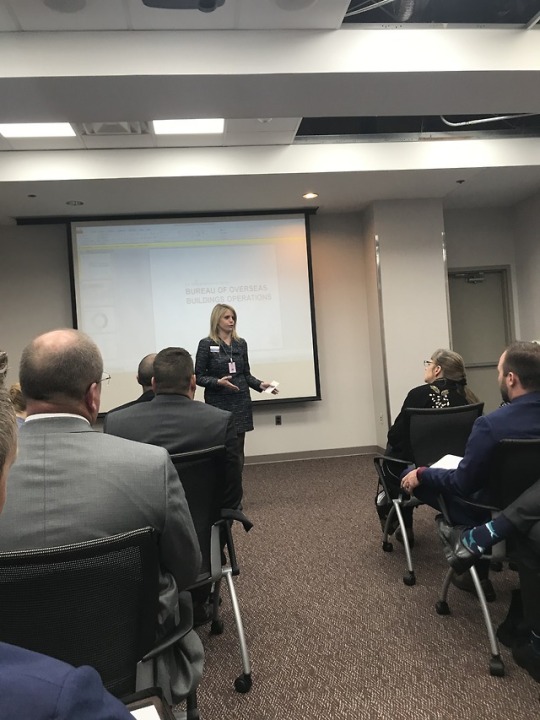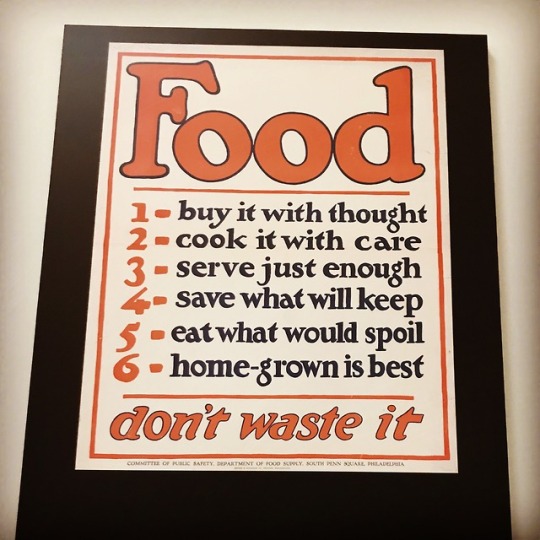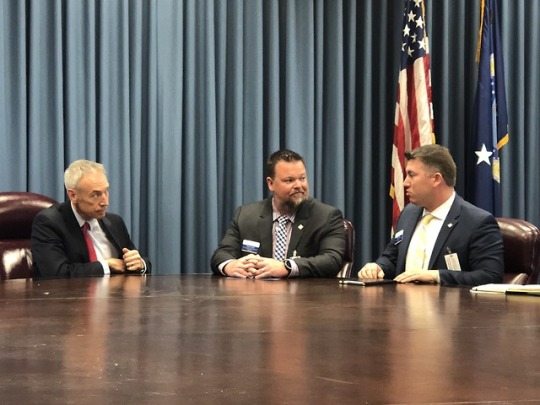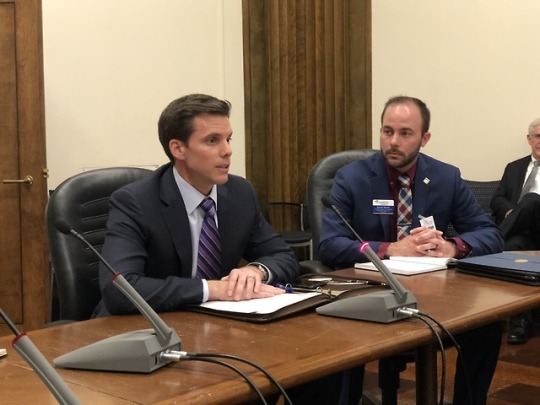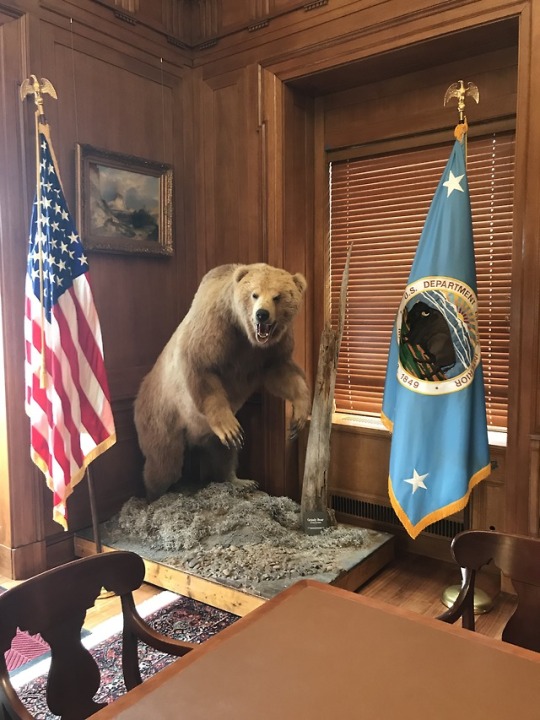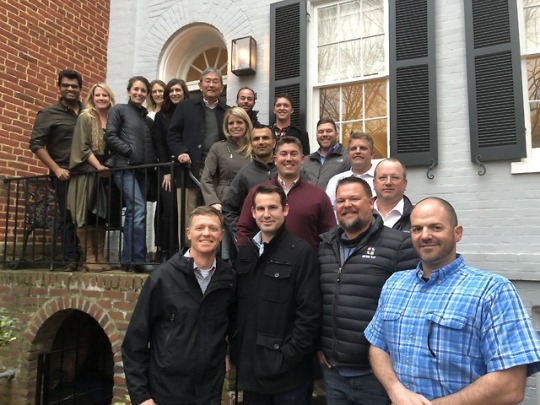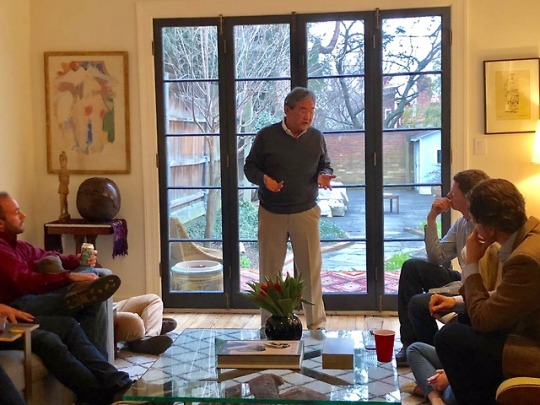This blog is dedicated to describing Class 48's National Trip from Sacramento to Washington D.C and everything in between!
Don't wanna be here? Send us removal request.
Link
Here’s a clip of some of the in-between moments from our recent class trip to Philadelphia, Gettysburg, Valley Forge, and Washington, DC.
0 notes
Photo
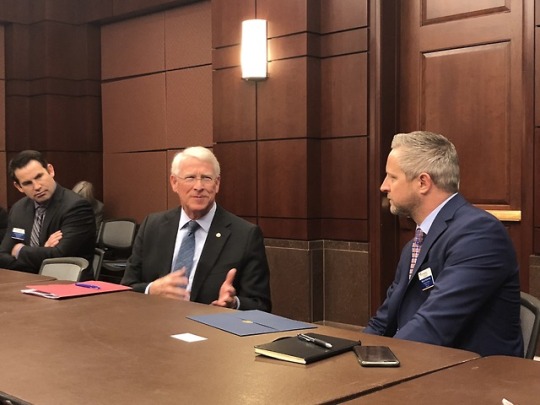
If you walk through our nation’s capital, it is very easy to be awestruck. Towering monuments to historically great leaders, museums enshrining history’s highest and lowest moments, statues that dot the city like Washington, Jefferson and Grant . Even the Capitol – from the perspective of a tourist – can feel like a museum dedicated to the idea of American democracy, and a monument to the flawless & visionary men and women who were its architects. But it’s not until you literally look beneath the surface that you are reminded that the Capitol Building is not a museum, but a living, breathing, working office building. Beneath a sea of guided tour groups with headphones is a sprawling network of tunnels and rooms buzzing with legislators, staffers, interns, lobbyists, clerks, constituents, and press talking or typing frenetically into their Blackberry’s (yes, Blackberry’s). And it’s not until you get to spend time with a few of these folks that you feel a sense of humanity behind the politics. Thanks to the Foundation’s incredible coordination, and the tireless work of Class 48’s own Ian LeMay (and his consummate assistant Curtis), we were able to spend a day in the life of someone on Capitol Hill, pinging back and forth from office building to committee room to the Capitol to the Supreme Court and back, with just enough time for a rushed hot dog and a cup of coffee along the way. We met with several of our nation’s leading legislators: Congressman Jimmy Panetta, Congressman Devin Nunes, Congressman David Valadao, Senator Roger Wicker, Senator Debby Stabenow, and Senator Diane Feinstein. Like our earliest leaders – those whom we revere the most – they are passionate, dedicated, and determined. Most importantly, like those men and women, they are not superhuman, but human, and filled with flaws like the rest of us. It was a great reminder that though we may disagree with some of their methods or philosophies, all of these men and women are completely dedicated to advancing and improving our shared democracy. And as we end our trip and think about how to apply what we learned to our own leadership journey, there is an important lesson to remember: we do not just lead because of our strengths and in spite of our weaknesses; both are an essential in creating the humanity and empathy from which leadership ability flows.
Thank you to the Foundation, the core faculty and staff, and to all the generous men and women we met during our National Trip. We won’t soon forget our time there.
��2�
8 notes
·
View notes
Photo
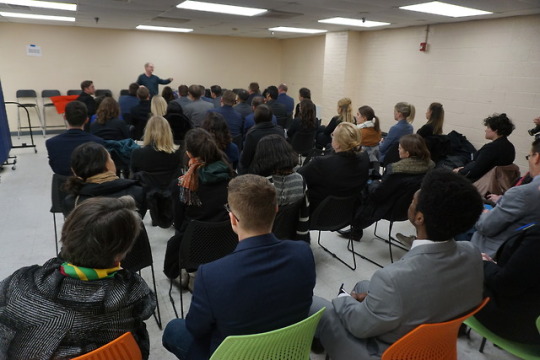
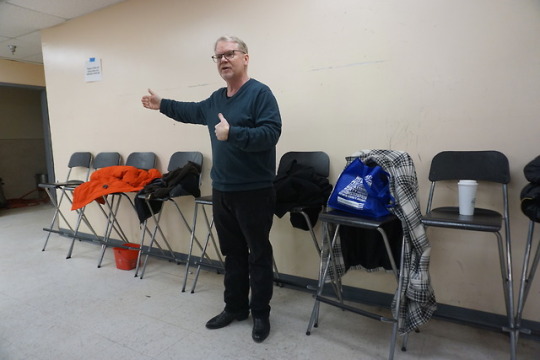
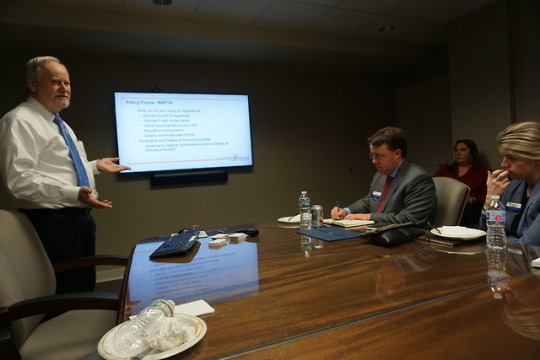
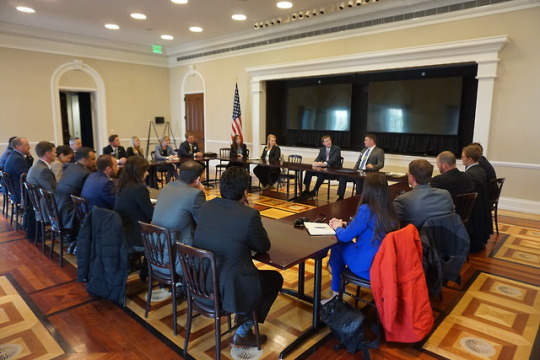
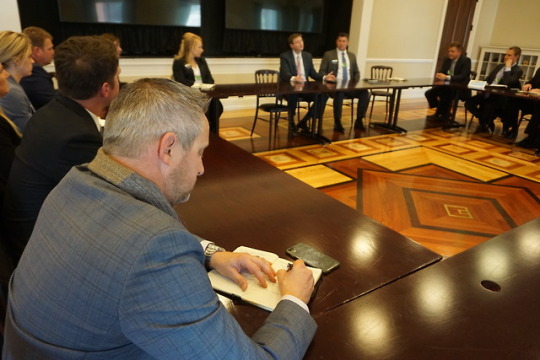
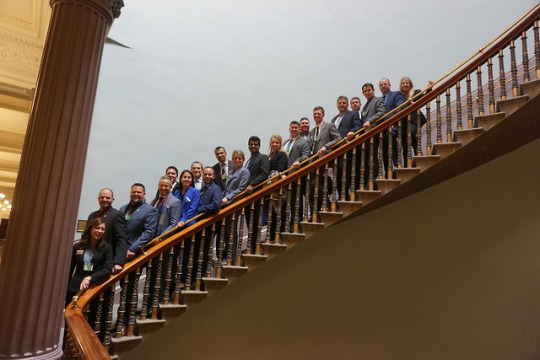

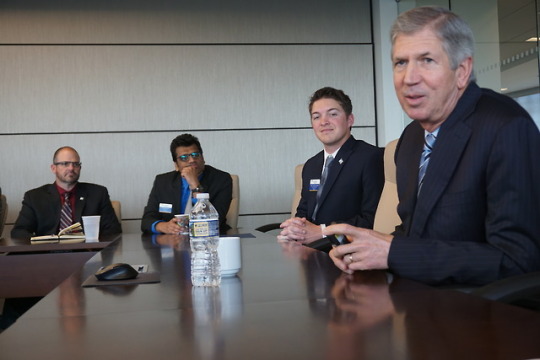
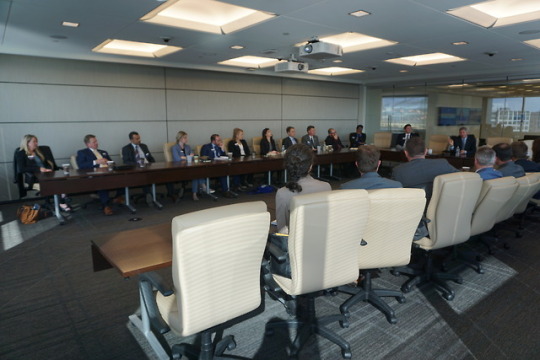
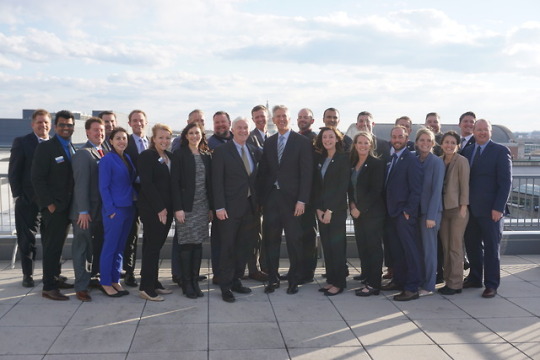
Today was another great day full of learning. We were able to visit The DC Central Kitchen, The United Fresh Produce Association, The White House and the American Chemistry Council. Each included unique messages and settings. We started at the DC Central Kitchen early in the morning but we will wrap up todays recap with that.
At The United Fresh Produce Association (UFPA) we met with Tom Stenzel, who is the President of the UFPA. He has been president for 25 years, and The UFPA has been helping growers of specialty crops for over 113 years. They represent a fully vertically integrated supply-chain in the produce industry from grower/shipper to packaging/processing to wholesale and retail. One of the messages that came out of today was even in a “specialty” industry such as theirs, they have a hard time coming together in agreement on issues. But even so, they have to provide a unified front when lobbying so, at this moment their top three issues are: workforce, NAFTA and The Farm Bill. They each are dynamic in their own way but the key was bringing their members together to build consensus on these issues to provide a unified front. Members of Congress don’t come to the Hill knowing everything about everything, and rely on constituents and lobbyist to help educate them to the issues. But at the same time, they don’t want to have to call thirty-five different groups on every problem. Obviously, workforce and immigration are hot button topics that push each party to their corners, but even still, there is room to find common ground to ensure that we as an industry aren’t sending a mixed message to Congress. This only allows them to kick the can down the road saying come back to us once you agree on something. Instead, we need to come to agreements ahead of time and stand united as we present our message to Congress.
We then walked a few blocks to a small unknown residence on 1600 Pennsylvania Avenue, where a guy with a “YUGE” personality lives. The walk was beautiful. Trees were starting to push out blossoms. Everyone was in fresh pressed expensive suits with places to go and people to see. We were then sat in a beautiful hardwood floored room with vaulted ceilings where we had the chance to speak with Ray Starling, National Economic Council, Special Assistant to the President for Agriculture, Trade and Food Assistance. He explained to us that President Trump was trying to solve two simple questions. One, what are the limits, and two what are the roadblocks to economic growth? How can he grow agriculture, health, energy, finance, etc. He also explained that 95% of our customers in Ag, are outside of the US, therefore we need to make trade agreements with all parties that are fair to both us and them. Other questions they are trying to solve are: how can we make the H2A more responsible, how can we reform regulation, and how can we purpose 25% of infrastructure spending for rural areas? At the end of the day, we need to continue to look out for the 5% of Rural America that is slowly being left behind on technology, bandwidth, housing and policy. It will take communication, telling a story and patience on both sides to get positive change.
After a fantastic meeting with Ray, we caught a ride over to the American Chemistry Council where we had an informative presentation and relaxing hors devour and wine reception with Cal Dooley. Cal, a CALF Class 13 Alumni, is the president of the ACC, and formerly served as a congressman in California’s 17th & 20th Districts. Cal shared with us the mission of the ACC, and the challenges their industry faces in Washington and more broadly. It’s interesting to note that agriculture isn’t the only industry facing an uphill battle both from a policy and public relations perspective. Cal’s messages for success as we go forth were simple: Invest your political capital where there is the best chance for return, be creative but fact-based with your messaging, and try to always be on the forefront of innovation in your industry. One last important lesson: it’s nice to know people in “high places” in DC as Cal generously treated us to a rooftop tour of the ACC’s office, complete with an excellent view of the US Capitol.
Finally, we take you back to our first stop this morning, The DC Central Kitchen. It sits in the shadows of the Capitol, yet it is actually housed in a homeless shelter. Homeless men and women litter the streets and sidewalks wrapped in whatever clothing or blankets are available to them. The Kitchen was started by Robert Egger after he watched his local church distribute meals to those in need for years, with no interest in helping them move past their current stage of need. In that moment he realized that “food would never solve hunger…” Take a moment to think about that. To truly help these people move from rags to an actual hope for the future it takes more than a warm meal. With that, DC Kitchen was formed. They work with local farmers to take marginalized food to help marginalized people.
They source, procure, prepare, and distribute 13,000 MEALS A DAY, which is equivalent to the number of meals you have eaten over the last 13 YEARS. This is every day. This means by the time you read this, DC Kitchen will have given a fresh meal to another 13,000 persons in need. Mike Curtin, the DC Kitchen director, told a story of one of their staff members that is an example how they are helping members of the community. This man told them that he had little expectations of even living to 21 years of age, but if he did, he assumed he would be in prison because everyone else in his family was either dead or incarcerated. Sure enough, his cycle of incarceration started at 11 years old with no parents at home to help raise him and his brother. It wasn’t until he was brought by his case worker to DC Kitchen that the cycle was broken. DC Kitchen takes former convicts and those on parole and puts them in a 14 week food prep education program that gives them the tools needed to join the workforce. The skills and abilities they are practicing also help prep the food that goes out every day. That man is now a manager at the kitchen, has his own apartment in his name, a matching retirement fund, and a college fund for his eight year old daughter. A rags to riches story where a man was given a hand and tools to rise from the ashes. In essence, that is what this Ag Leadership is trying to teach. How do you bring change using food, family, fellowship, hope and creativity.
To wrap up the day, we’d like to share Mike Curtin’s simple but powerful words: “giving back should be less about the redemption of the giver and more about the liberation of the receiver.” This simple but impactful phrase, as we saw today, is all too often forgotten when we are serving others and is a game changer for our society.
We will see you tomorrow for our last day in DC,
Mitchell Yerxa, Melissa Lema, Joey V, and Adam Lovgren
6 notes
·
View notes
Photo
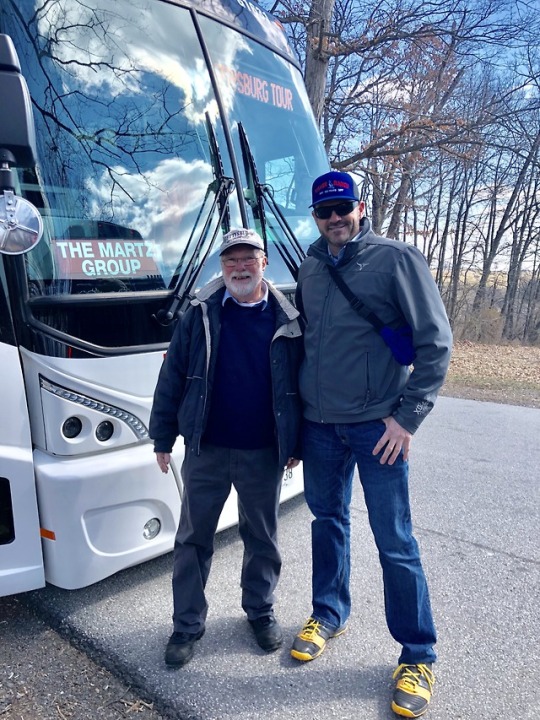
I want to share a personal experience I had during our tour at the Gettysburg National Military Park.
This is Roy Frampton, a tour guide at Gettysburg. I recognized him the moment I saw him at the General Robert E Lee Monument, where he was concluding a tour with a group of middle school kids. I stopped him and asked how long he had been a guide here. After he replied “over 50 years”, I knew it was him. He, of course, had no idea who I was. I explained to him that he was my tour guide when I visited the battlefield 25 years ago, with my 8th grade class. It was his passion about history and the way he presented the events of the battle that first ignited my own interest in military history, and that has never left me. I have always credited him for lighting that first spark, and I wanted him to know that. He smiled and said thank you, that no one had ever said that to him before and I had made his day. As we parted ways, my fellows asked me who that guy was. As I was excitedly explaining the story, someone suggested I get a photo with him. In addition to all the incredible experiences I am having on this trip, I will always be happy knowing that I met Roy and let him know how grateful I am to have been on his tour 25 years ago, and for the lifelong impact that he left on me.
-Andrew Fisher
Grateful Fellow / Class 48
3 notes
·
View notes
Text
Washington, DC March 12th
Today, Class 48 had a very full and meaningful day. We had the distinct opportunity to meet with many California locals now representing us at a national level. We’ll delve into the details of our schedule below but want to summarize what we really walked away with at the end.
Beginning our day with synthesis, our class reflected on the lessons learned this past week. We then jumped on the metro to Rosslyn and arrived at the State Department. There we met with Special Assistant, Mr. Ricky Gill, Esq. and his staff from the Bureau of Overseas Building Operations. He really showed us the complexities and monumental tasks behind establishing and maintaining embassy and consulate properties across the world. One of the key themes of our day was to build relationships wherever we go. We need them and they need us. We’ll elaborate on this below.
Next, we rode the metro back to DC and found ourselves at the United States Department of Agriculture. We had the privilege to meet with the Deputy Secretary of Agriculture, Stephen Censky. While sitting around the historic round table where President Reagan and Prime Minister Margaret Thatcher held talks during the G7 Summit in 1987, he spent his time answering our questions on leadership and the state of agriculture on a regional and national level.
After the USDA meeting concluded, we hustled across the National Mall to the Department of Interior to meet with Assistant Secretary of Water and Science, Austin Ewell. To our amazement, we discussed current water issues across California in the same room where FDR gave his fireside chats throughout World War II. He described several federal issues impacting California water and the importance of investing in California’s water infrastructure.
To end a great day, in true Ag Leadership fashion, we were invited to meet Carissa Rystroms’ (one of our fellows) immediate family living in Washington, DC over an informal close-of-day reception. To our surprise, we were joined by an Ag Leadership Class 1 Fellow, John Nakamura. He shared several anecdotes about his career and the impact the program has had on his life over the past 48 years. It was an honor to spend time with Mr. Nakamura and hear, first-hand, how Ag Leadership has made its mark on a truly inspiring individual.
“Growing leaders who make a difference” starts and ends with growing relationships. This has been a common theme for our entire national trip from Sacramento to this evening with Mr. Nakamura. As an example, three of the four speakers were directly tied to the California Agricultural Leadership Foundation. Each speaker taught us to seek the strength in the people around us, draw from it, and reflect/direct it onward. Relationships will change agendas and priorities faster and more powerfully than any strategic plan can ever accomplish.
Thanks for reading and good night from Washington, DC.
Carissa Ryström, Paul Crout, Jarrett Martin
2 notes
·
View notes
Photo
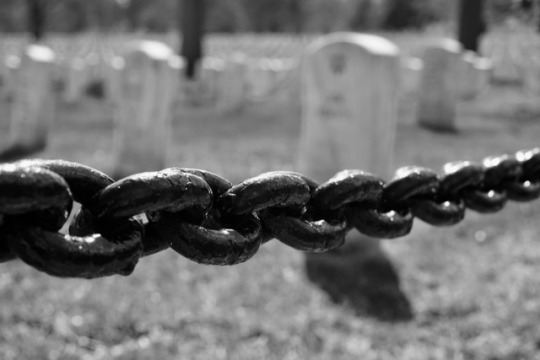
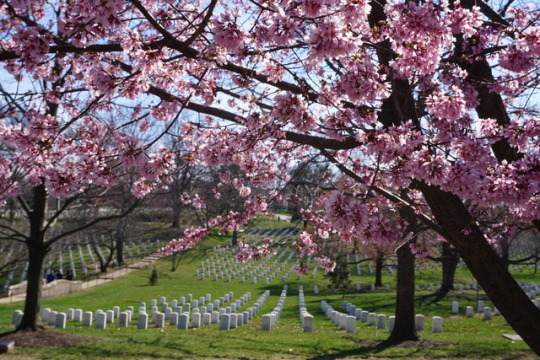
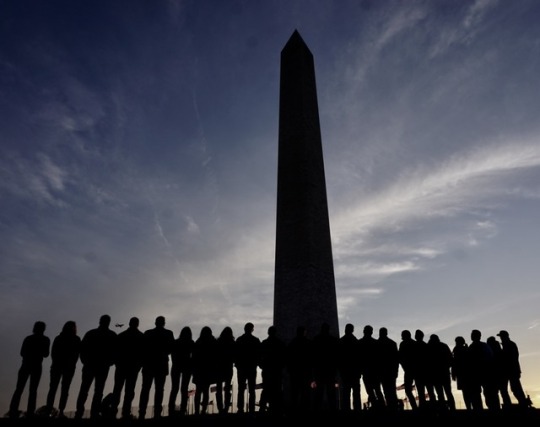
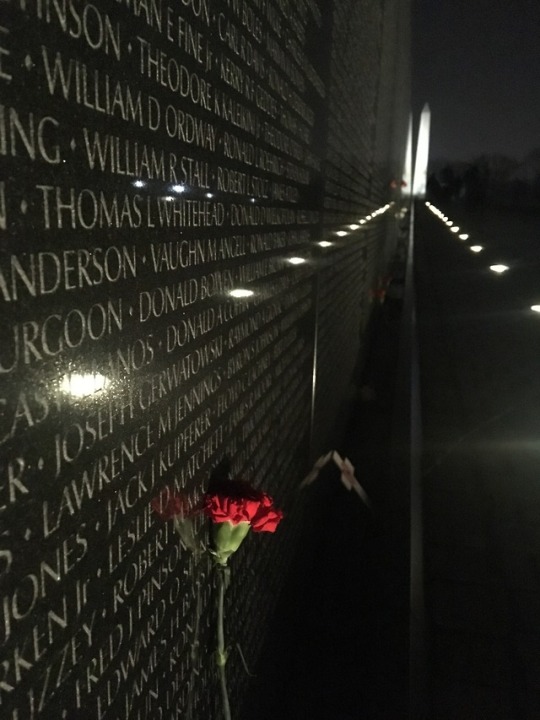

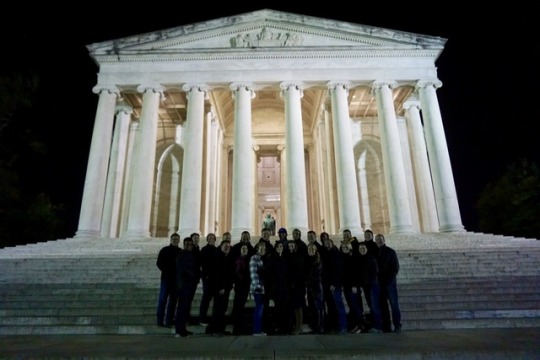
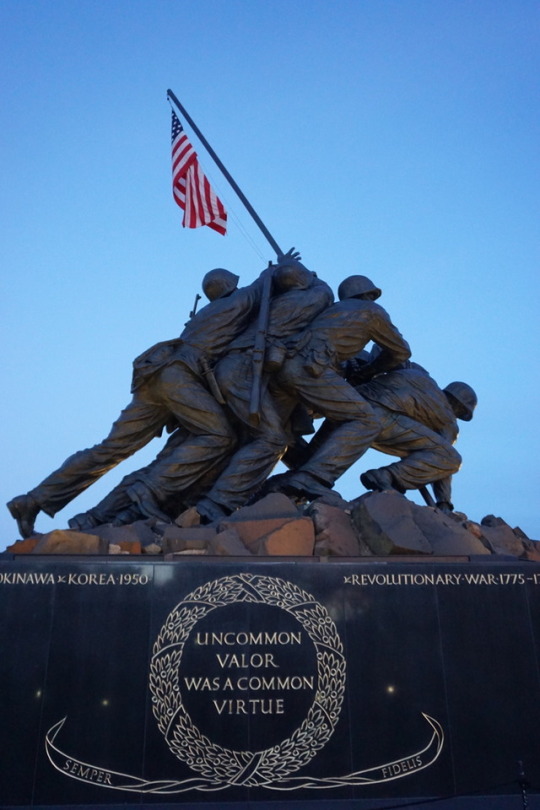
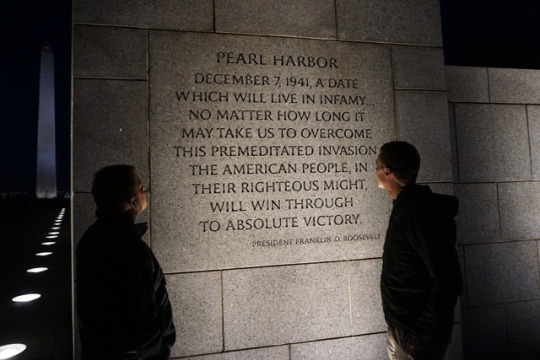
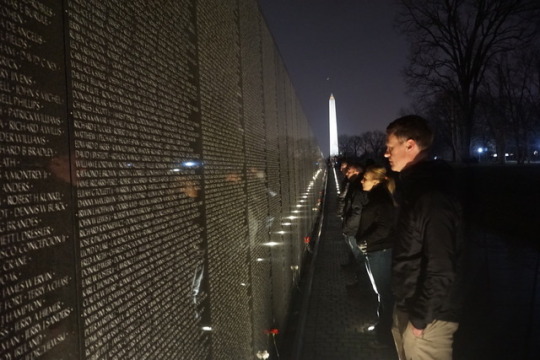
Washington D.C
The morning started at a local church, the afternoon was spent at Arlington Cemetery and the evening ended with a night tour of the Washington monuments. The common thread that ran through all three is a simple phrase that we as a class have started to call “Faith and Fellowship.” A faith in humanity, a faith in this country, its leadership, and a desire to raise each other up as we do ourselves. The sermon this morning broke down John 3:16 line by line, speaking about a love for all people not just a select few. A few hours later, we as a fellowship read the Gettysburg address inscribed in marble on the walls of the Lincoln memorial which states that “all men are created equal.”
The reverend spoke today with such power and conviction that I cannot put it into words, used a few lines today that I loved. He said, “we were taught as children that this little light of mine, I’m going to let it shine.” He said we were not “taught to put that light away in a box under our bed.” He spoke of sharing our light to help drive out darkness, and to reach out and cherish those both in the white houses and the crack houses. He spoke of not sending your kids to church, but taking your kids to church. If that isn’t the perfect metaphor for advocacy, Im not sure what is.
Sadly, many of these monuments exist because a war was fought and thousands of souls were lost. But, each war was fought with a believe and a faith in an idea or principle. One monument used only four words, yet spoke a powerful message, "Freedom is not free.” From the founding of this country to the civil war, WW1, WW2, Korea, Vietnam and now Afghanistan we know this to be true, yet it is our greatest hope that we are becoming a more united country and a more peaceful world with each great battle. Whether this is true or not is not for me to say, but as I stood before the statues of great leaders I cannot help but believe it to be true. Washington founded a country and helped deliver freedom to a country. Lincoln finally understood the oppression of millions and brought much needed justice to black Americans and slaves. FDR fought hate and fear to help rescue Western Europe. Each of these acts took a faith in themselves as leaders and a desire for fellowship worldwide.
So, once again, whats the big idea? Words have tremendous power. Never overlook an opportunity to use your voice for good. Love thy neighbor as you love yourself. A rising tide raises all boats. Don’t just work in ag, promote it and take your issues to the capitol and keep pushing through the loses until victory is had. There will be pain. There will be agony. But have a belief in yourself, in your brethren, let your light shine, and never forget those who have paid the ultimate sacrifice so that you may raise your families in the best country in the whole world. Remember, for god so loved the world, not just the unbroken. Amen.
Good night and god bless,
Mitchell Yerxa
4 notes
·
View notes
Photo
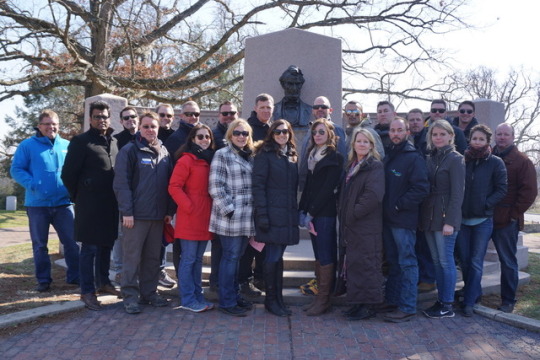
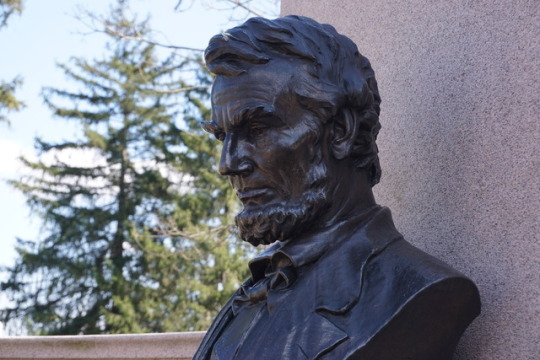
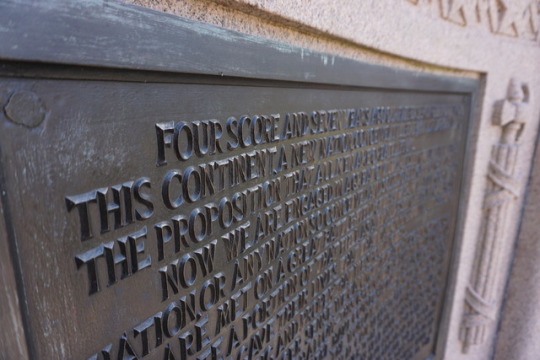
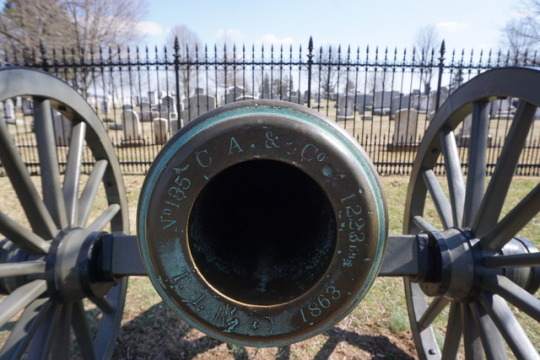
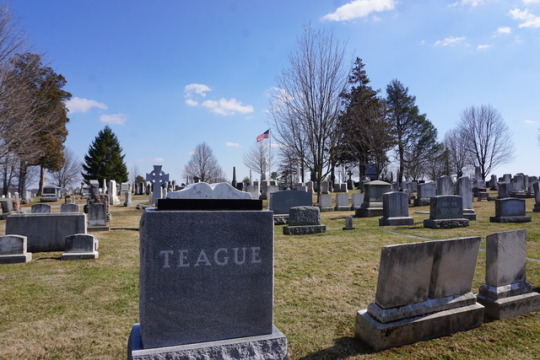
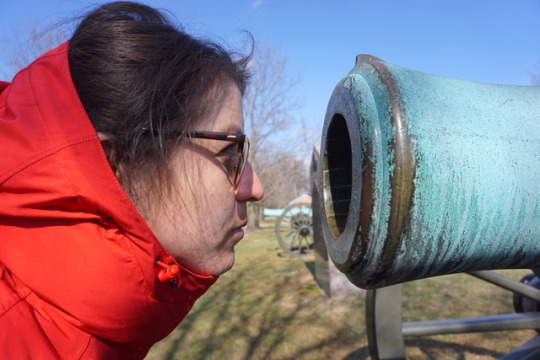
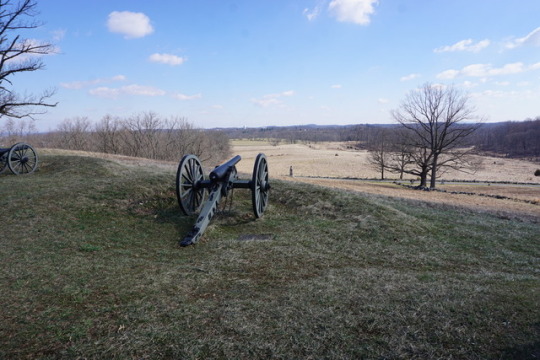

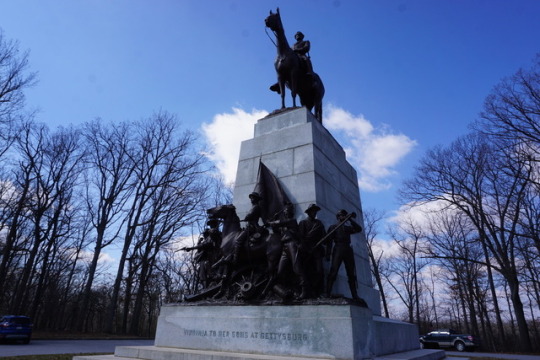
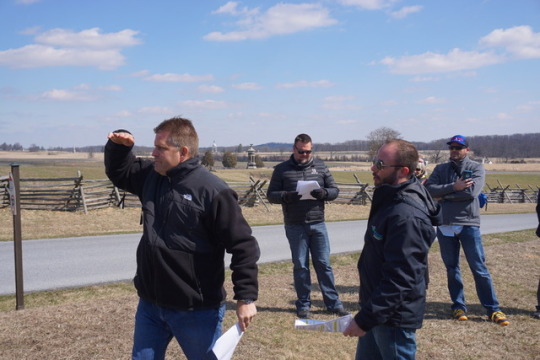
“Four Score and Seven Years ago our fathers brought forth on this continent, a new nation, conceived in liberty and dedicated to the proposition that all men are created equal.” This four minute speech, written 155 years ago; yet here we are still teary eyed talking about how powerful 211 characters can be.
Our brisk March morning in Gettysburg was in great contrast to the sweltering 3 days in July which would be counted amongst the bloodiest of the Civil War. As we traveled through the fields of Gettysburg the differences were striking: The anguish and horror of the battle are remembered on quiet, solemn fields, the smell and noise of the guns and artillery-still standing today- are replaced with chirping birds and blue skies. The carnage of Gettysburg would be hard to imagine were it not for the monuments scattered throughout the National Park, dedicated to the men who served their respective causes on that hallowed ground.
Bruce Rice, our licensed Battlefield Tour Guide and leadership mentor, spent the better part of the day guiding our group through the landmark battles that culminated in the Union Army’s victory. Throughout our walk/drive through the battlefield the stories of leadership that emerged illustrated the importance of many of the lessons we as a group have been learning these past 6 months. Bruce has an unmatched knowledge of the battle, and we were grateful to extend our stay at the site by a few hours to explore more in depth the decisions that were made on both sides of the must-win battle.
Gettysburg was an unlikely location for the most decisive (and deadliest) battle of the War. General Lee, in an attempt to eventually take Washington DC, decided to go to Harrisburg through the small town of Gettysburg, making the chosen route infamous. The first rule of battle is “the first thing to change is your original plan.” It was the site of men changing history with last names like Meade, Sickles and Howard. It was the site of two sides of an argument coming together in a literal clashing of swords. It was the site of asking what a truly free unified country was worth; how many lives must be lost before a victory could be made to free not only men of white skin but also men of black pigmented skin.
Once again I ask, what is the big idea? For me, it was the power of words and speech. Lincoln was in a position few, if any, presidents have been in before. His policies and ideals for a country were literally tearing the nation apart and causing the massive loss of a generation of men. Lincoln was not disliked by the other side, but rather hated to the point where he had to assume his life was at risk everyday. At the end, rather than reveling in victory, his diction was distinct: We, us, a nation of brave men, are dedicated to unfinished work, that those who gave all shall not die in vain. These word choices proved that even though he and the Union army were overmatched and did not hold the higher ground, victory could and was still achieved. Today we can look to these words for inspiration; when your industry, lifestyle or political party seems overmatched, just remember that victory can still be achieved with a strong core belief that all men are created equal and that this great country can endure.
We will see you all in Washington D.C tomorrow.
Cheers,
Mitchell Yerxa and Melissa Lema
2 notes
·
View notes
Photo
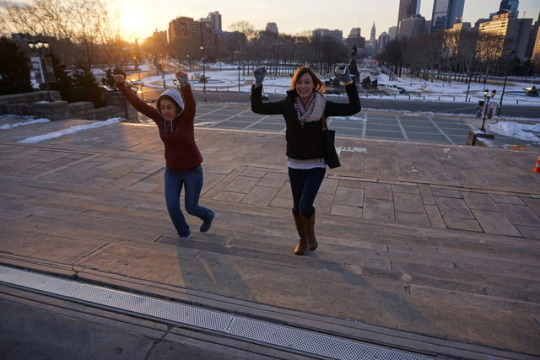
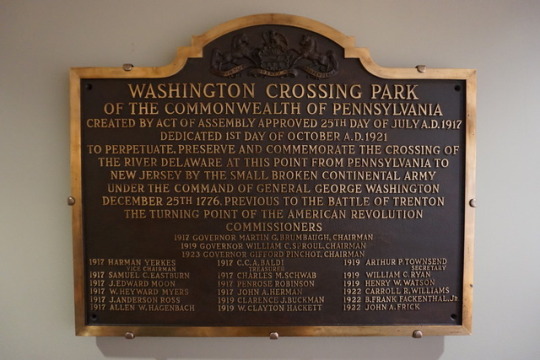
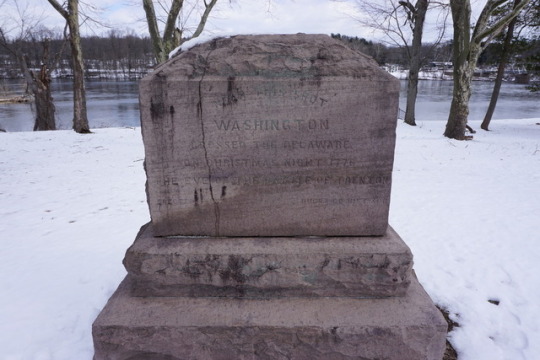
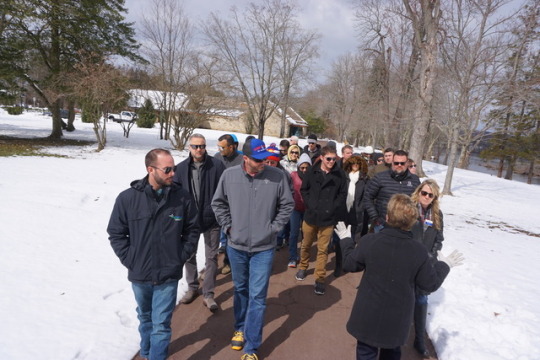
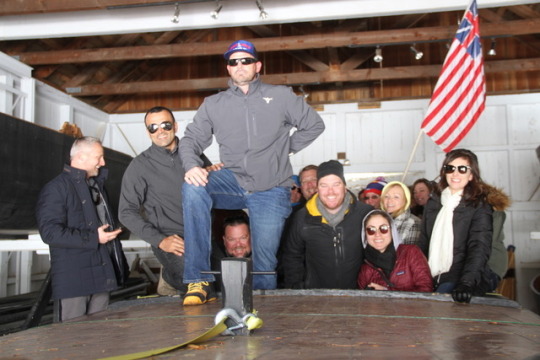
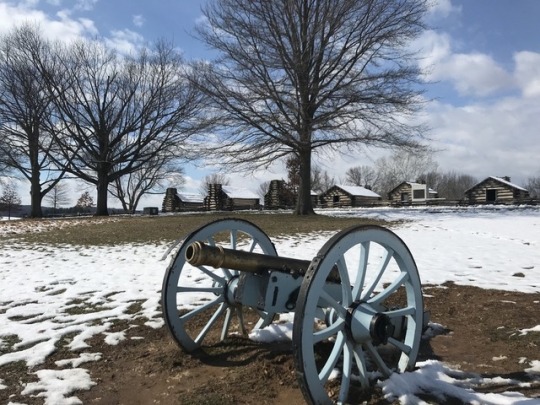
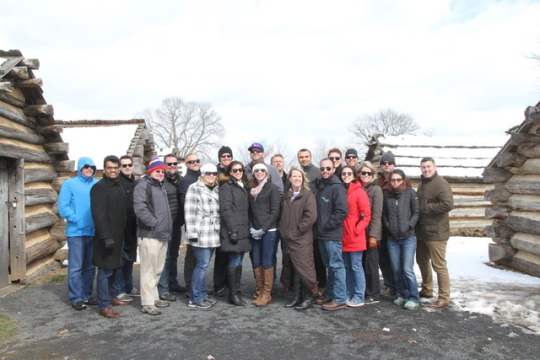
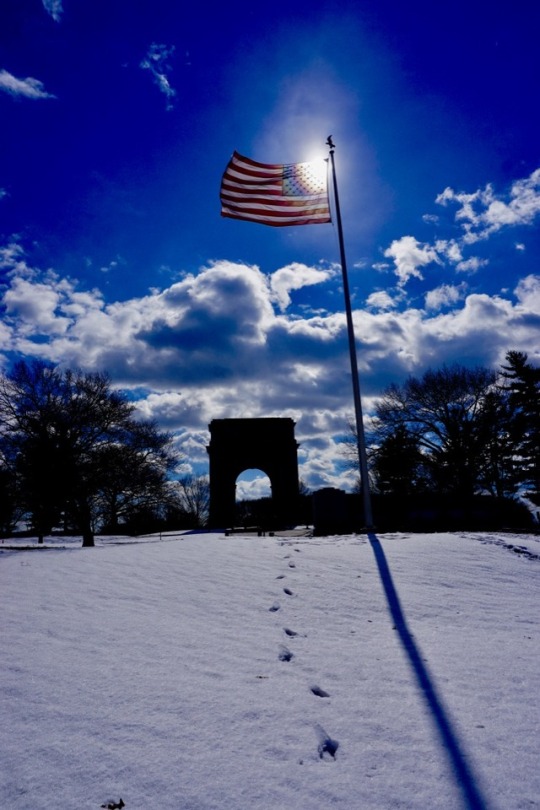
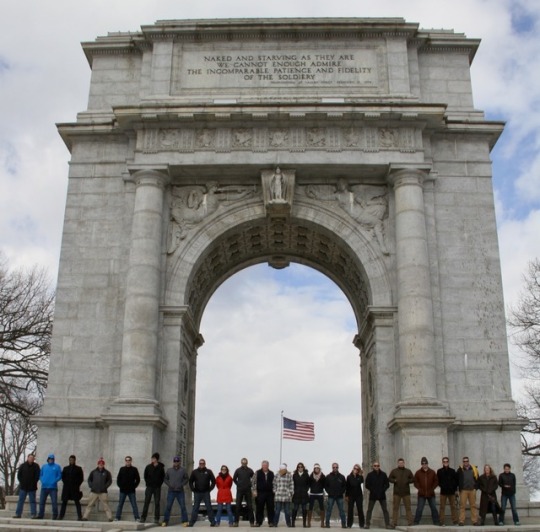
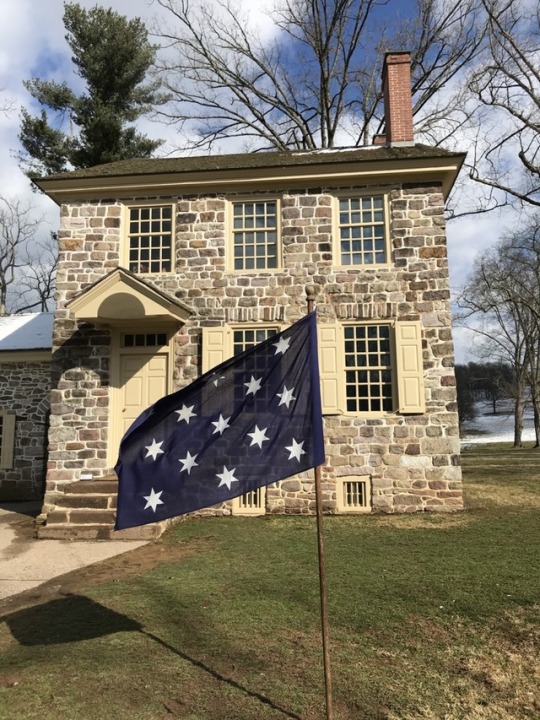
The day is December 25th 1776. Christmas Night. 2400 men cross The Delaware River in flat bottomed boats over the course of 11 hours. This marks the start of the 10 days that changed the world.
Why does this day matter? Why does this event stand as a pinnacle of American history? It matters because a man named George Washington decided to push his men at the end of their possible tour of duty to the utmost extremes to salvage a victory against an overwhelming force using only 10 dollars and a plea to their patriotism.
General Washington was able to persuade his troops to attack the German soldiers in the British Army while they celebrated Christmas, possibly with ale, and take them by complete surprise and start what became the beginning of the end of the American Revolution. Now, we know the war would last at least another 5 years, but even General Cornwallis at the Paris Treaty admitted that losing that night was the end of the British reign over America.
After leaving the Delaware River, Trenton, and Princeton with decisive victories, Washington lead his troops to Valley Forge which is high tactical ground a little over a days walk from Philadelphia where the men cut down trees to build log cabins to wait out the winter. These cabins held only a few men at a time so they took turns sleeping a few hours before it was time for the next shift to rest. They were there through June before continuing their battle against British forces. So what is the big idea here? First, Washington stayed the entire time with his troops rather than going home. This proved his commitment to the men and his willingness to be at the forefront of the inconvenience. Once again proving his humility and leadership in many different forms. He also used these 6 months to train and drill the troops to turn a rag tag militia into a well trained army. When asked why they stayed from Christmas through June, one of the minute men responded “once you have tasted freedom in a nation, there is no going back. Every day spent here is one day closer to continuing the freedom of this nation.”
After leaving the cabins of Valley Forge, we went to the headquarters based in Valley Forge. For perspective of the importance of this building to the times, think of it as todays Pentagon. A place for military strategy and planning. The unique fact about this building is 76% of it is still original, which is extremely rare for a national monument or historical site. The docent stated “great people become great by living a lifetime of doing small decent acts, which eventually becomes one great act which propels them to infamy.” Truly, a man who would become our first president lived through many months of pain, many years of war, and gave up supreme power once again for the essence of freedom.
See you all tomorrow,
Mitchell Yerxa, Melissa Lema, Alejandra Navarrete and Paul Crout
5 notes
·
View notes
Photo
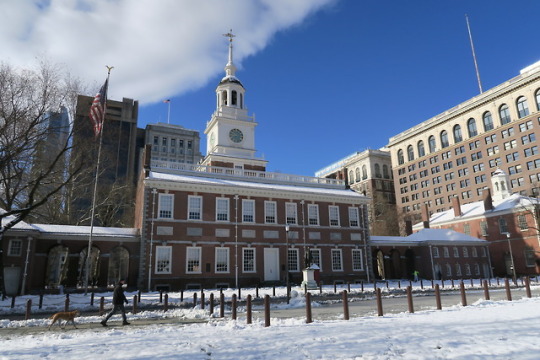
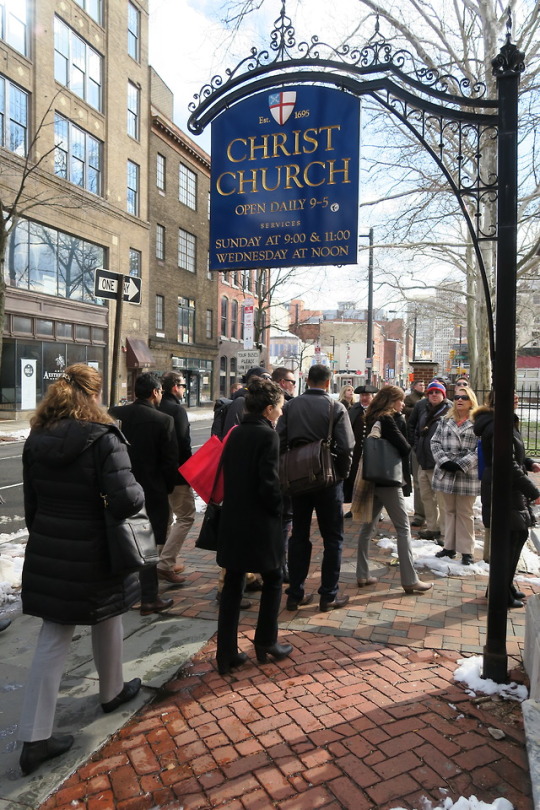
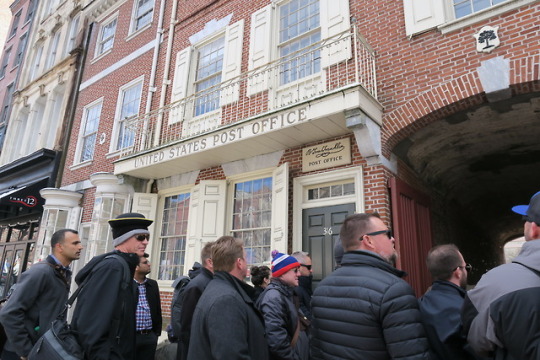
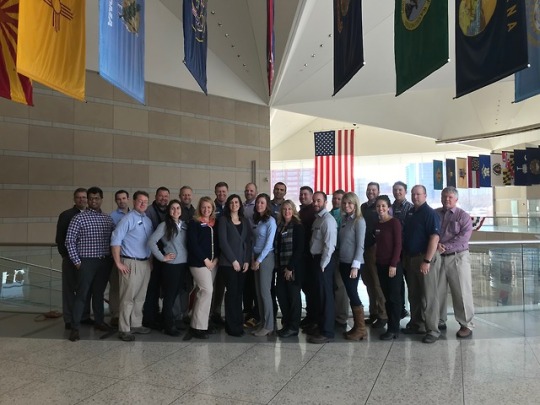
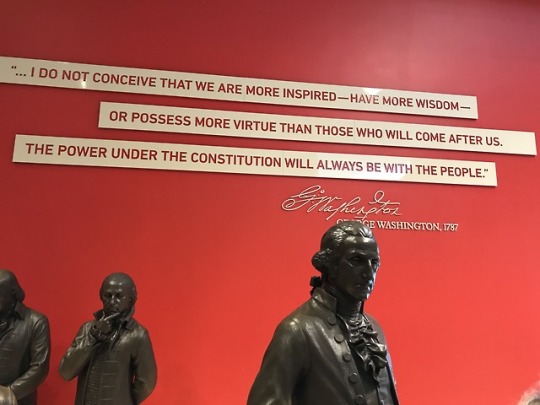
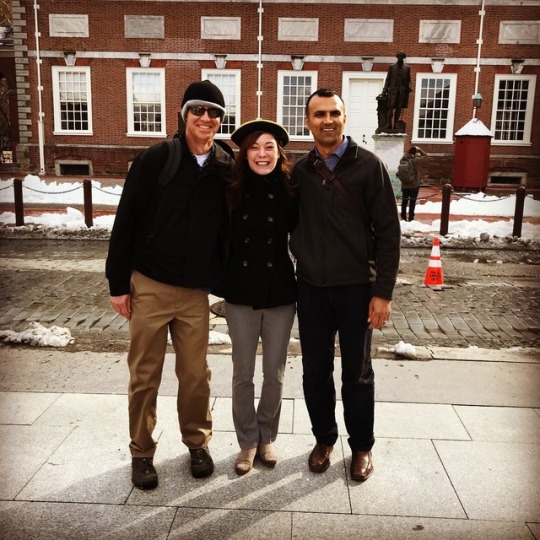
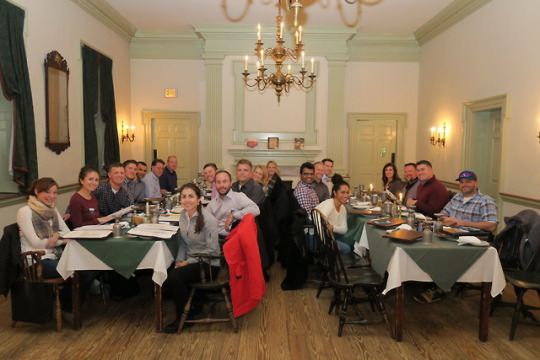
We started our day with a snowy walk to the national constitution center where we met Mike Adams. He introduced us to Philadelphia with a story about the true Philadelphia attitude.
In 1787, Pennsylvania Federalists could not reach a quorum to vote to establish a ratifying convention for the new U.S. Constitution. Federalist leader John Barry resorted to organizing a mob to collect two Anti-Federalists from the state legislature. In true Philadelphia style, they were roused out of their boarding houses, dragged to Independence Hall and bound to their seats in order for the group to reach a quorum and vote to ratify the Constitution.
At the NCC we were all moved by the film “Freedom Rising” that described the development of the US Constitution with the founding father’s commitment for the new government’s power to come from the people; the radical concept of establishing three branches of government where power is controlled by dividing it, and the ultimate power resting with the voting public.
After an exciting tour led by Matt Riffe (complete with life-sized bronze statues of the founding fathers and an EPIC mannequin challenge), we jumped into a discussion led by Mike Adams of NCC about all aspects of the 14th Amendment. This illustration showed what was truly a second founding of our young country following the end of the Civil War with the Reconstruction Amendments: 13, 14 & 15.
Following our time at the NCC we followed Revolutionary era character James Claypool on a walking tour of historic Philadelphia; James showed us some of the most important sites in the city, including the grave of Ben Franklin, Betsy Ross’ home/shop, Independence Hall, the original US Post Office and the site of Ben Franklin’s home.
Our historic walking tour culminated at the Museum of the American Revolution. The most compelling exhibit (which is a tough contest, by the way!) was the revealing of George Washington’s actual battlefield tent. We learned that for the 8 years, 4 months and 15 days of the Revolutionary War George only spent a handful of days at Mt. Vernon, preferring to live amongst his troops in a tent on the battlefield. This is an example of his personal investment in the cause and his un-wavering character and principals. Because of the age and sensitivity of the artifact we cannot share a photo, but our shared experience is something the fellows of Class 48 will not soon forget.
Our day in Philly is in the books...we’ll catch you from Battlefields tomorrow!
John Ellis, Alejandra Navarrete, Tim Fitzgerald Melissa Lema
5 notes
·
View notes
Photo
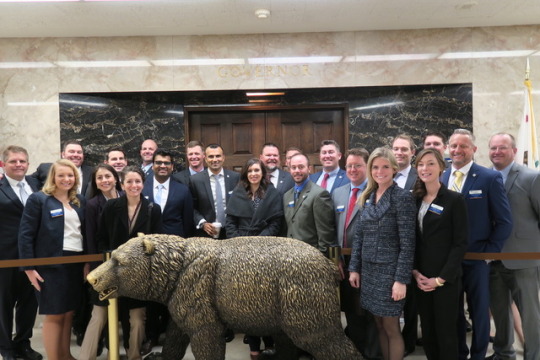
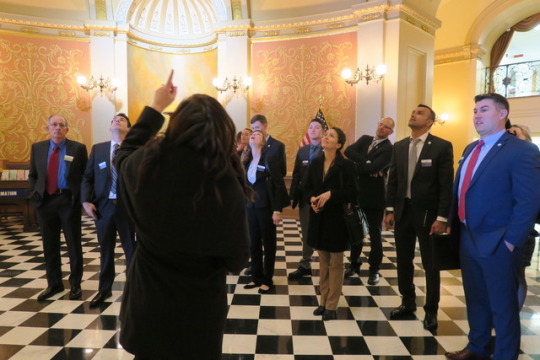
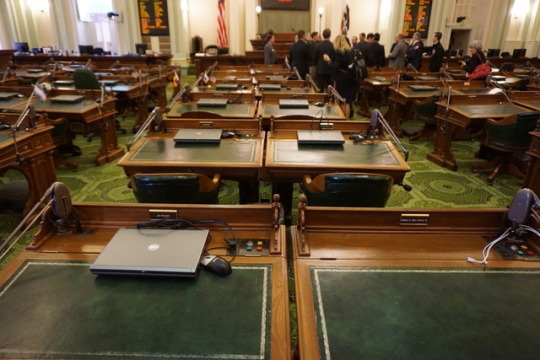
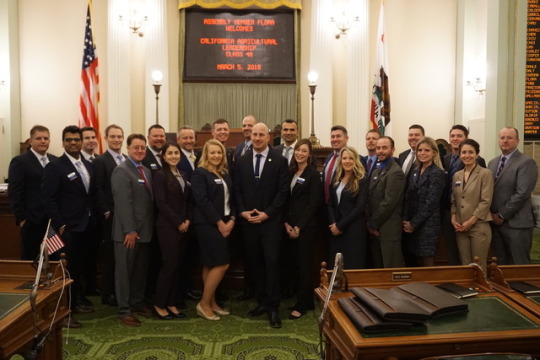
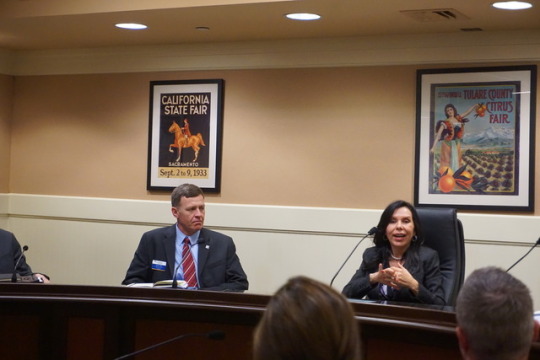
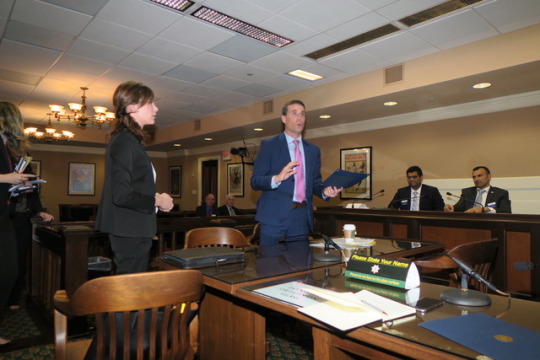
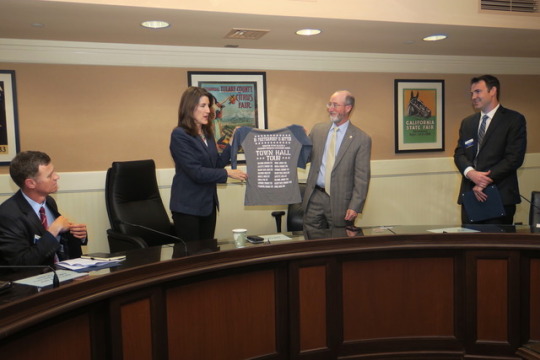
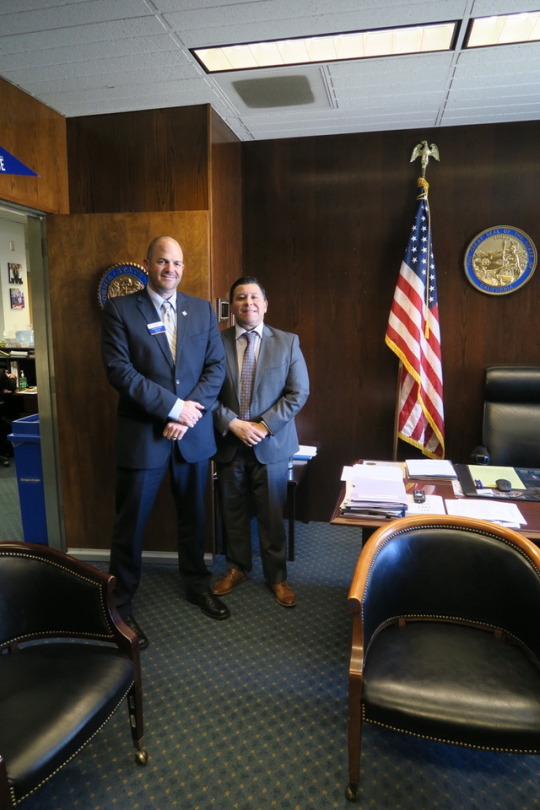
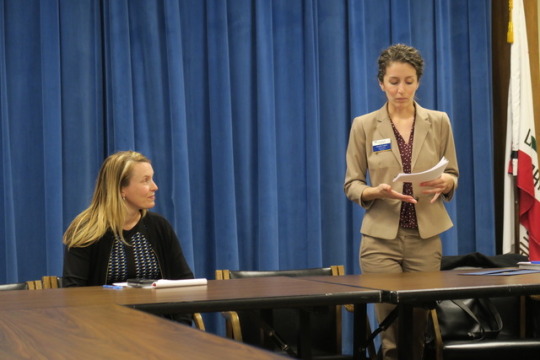
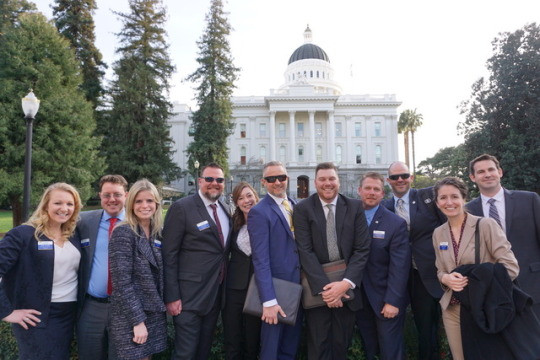
Our day started at 7:30 where Lauren was nice enough to give us a tour of the capitol and Assembly member Heath Flora gave us a tour of the Assembly floor. To have the chance to stand at the desks where so many decisions about California have been made was unbelievably powerful. Truly the essence of “if these walls could talk.”
Our first speaker of the day was Senator Mike McGuire from Healdsburg, CA. It was great to start with a speaker who is very bullish on the future of California. His enthusiasm for rural California and the ability for the 95% and the 5% to work together was undeniable.
We then spoke to Assembly member Brian Dahle from Shasta County. He owns a seed business back at home and is one of only 3 members of the Assembly who owns a business at home while being at the Capitol. He was a powerful speaker who stated that he was “here not to be elected but instead to help a struggling county and a struggling state.” One of his messages that ran through his entire talk was that “the truth will set you free.” What he meant by that is that too often politicians get caught up in either trying to soften the truth or do nor want to give all the facts because once someone has the facts, choosing the correct choice is easy.
The third Assembly member we spoke with was Assemblywoman Blanca Rubio of Los Angeles. She is a single mother of 2, who was deported at the age of 6, and was undocumented until the age of 13. She was a teacher for 16 years. She, like many who spoke to us, repeated “41 is the magic number.” Meaning, relationships are crucial. Relationships are everything. If you want something done, you need to work with others to see if you can create positive benefit for not only yourself, but for the other 40 you want to vote for the bill. Her humility was evident. She said she had not only scheduled meetings at every single office in the Assembly to go to them and introduce herself, but also made everyone homemade molé, which I’ve named “holy molé.” Essentially the message was, leadership comes in many different forms, but never forget to look out for people and their needs. Senator Ricardo Lara was our next speaker. His message was “relationships are everything.” He stated that while this building looks big, it is actually very small. What he means is, people will help you if you help them. Stay humble. Continue to overlook the politics, but instead help your district and help you state the best you can and not take attacks personal. To best help your district he stated “the best thing you can do is go directly to the experts in the field.” What that means to Ag is we need to continue to tell our story. We need to continue to reach out, to give tours, to answer questions, and to not only advocate, but teach.
Senator Jim Nielsen, Class 5, spoke about the changing civility of the country. He was a Senator, took an 18 year break, and now is back in office. He said that in this time that there is less trust among members of the Legislature. The respect for the institution, the rules and each other are gone. Back in the past legislators could beat each other up on the floor and after have dinner together. He felt that is gone today. He loves to mentor others. He loves to see those he mentors aim high and achieve. One of his favorite mentoring stories involved a young man who has been a quadriplegic since he was eight years old when he broke his neck in diving accident. He learned how to draw beautiful Western drawings using only his mouth. He is now an accomplished artist and to this day still can only draw using his mouth. The message being, things can always be worse, but its how you approach every situation can have a positive. He felt that Proposition 1 is his best partnership with Governor Brown.
Senator Steve Glazer and Assemblywoman Cathrine Baker came to us and spoke about bipartisanship. They represent overlapping district but have different political affiliations, yet have made it a huge effort to work together; “reaching across party lines.” By some they are deemed non-team players but they don’t feel compelled to toe the line of their party. They do what is best for their district first, and state second. They do not feel beholden to specific interest groups, which allows them to vote as they feel is needed. The biggest takeaway from this session was that they agree that they “both want the same thing, even when they don’t agree how to get there.” Truly a look of how collaboration could look at a state level when people want the best for the people, not their special interests or party.
Assemblymember Jim Cooper of Elk Grove spent many years as a law enforcement official before running for his district seat. He openly spoke about that neither he nor his party knew much, if anything about agriculture. He, like every speaker before, once again echoed the need for farm tours. For ag to reach out and answer questions that law makers have and help them better understand convoluted bills and ideas. He is considered a rebel in his own party who once again doesn’t follow party line, but is trying to do what is best for his district and state.
Chief Consultant to the Assembly Water Parks and Wildlife Committee, Catherine Freeman, helped explain the budget process. Unlike law makers, she is not elected, and therefore is not bound to term limits. She agrees that many changes need to happen, but a strong majority doesn’t want to change our oldest laws. Many times bills have come up that would be helpful to many sectors, but are killed before they can reach the floor. Concurrently, many other bills can be changed midstream without any input from the person that started the bill. She also spoke of peculiar incidents, for example bills impacting agriculture, that do not appear in front of the Senate or Assembly Agriculture committees, but instead appear before the water and environmental committees instead.
Our last speaker of the day was Keeley Bosler, Cabinet Secretary to Governor Brown. She was raised on a cattle operation in Etna, CA. She likes the openness and willingness of the state law makers to try new ideas. She believed that Governor Brown’s main interests before he leaves office is fiscal stability, state water project issues, climate change, transportation, and criminal justice reform.
To wrap it up, what did this all mean for the day? To me, the messages were simple; build trust, build relationships, focus on the needs of the people, not the party. Participate, communicate, reach out and share you knowledge and wisdom. Stay humble, remember that each of us has different needs in our district, but we all have the same needs as people and a family. Learn to agree that we can have differences in opinions but that doesn’t mean that either is 100% wrong or right. Lastly, meeting each of these members face to face reminded me that they are just normal people with real lives trying to do their part the make the state the best they can. They want to hear from not only their districts, but also from those who are being affected by laws past and present. So, as an ag industry we have a massive responsibility to reach out to all of our law makers and have continual conversations. To put aside the business of strictly running our business but also make the effort to show and tell what makes our industry so special.
See you all in Philly!
Mitchell Yerxa, Punit Parmer and Andrew Fisher
8 notes
·
View notes
Photo
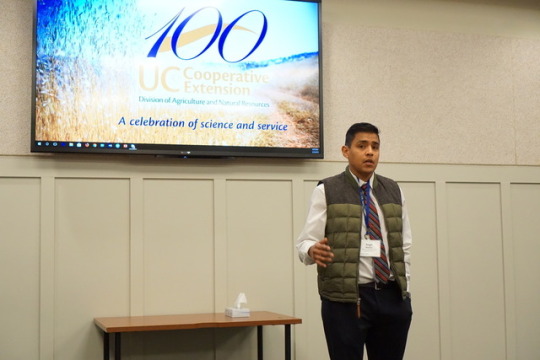
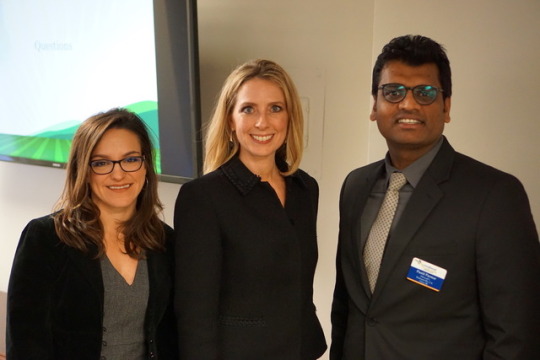
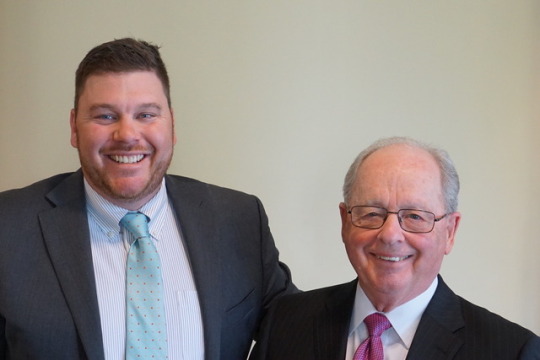
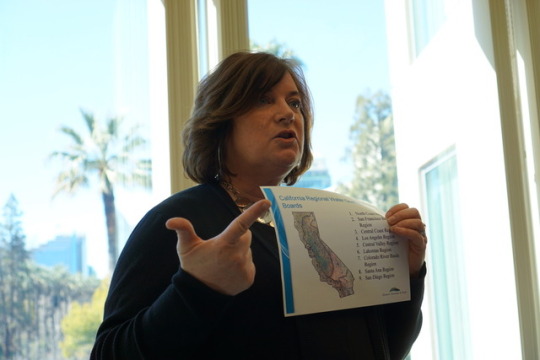
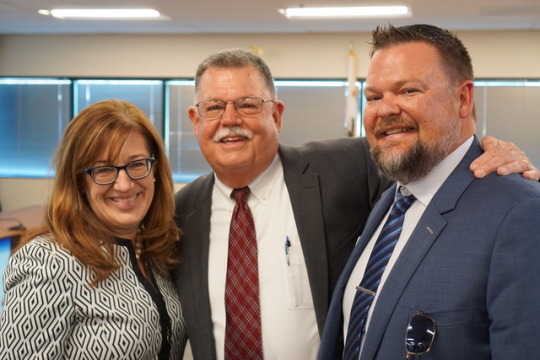
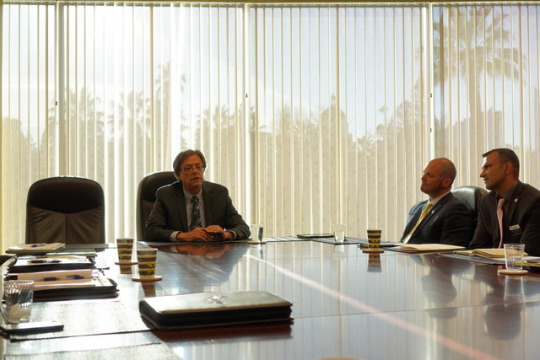
Sacramento Day 1 in the books. Today we learned about California’s legislative and regulatory processes.
See you all at the Capitol Tomorrow!
Mitchell Yerxa and Lauren Hajik
7 notes
·
View notes
Text
Pre National Seminar Blog
Hello Everyone!
This is my first time blogging so Im excited to dive into this exciting world as we as Class 48 make our journey from Davis to Sacramento to Philadalphia to Gettysburg to Washington D.C. It should be an amazing look at both the past and the present and both state and federal governments. We will be posting pictures and videos each day to give you a great look at our daily seminars and adventures! I look forward to any questions or comments you have as a viewing public.
Cheers,
Mitchell Yerxa, Class 48
13 notes
·
View notes
